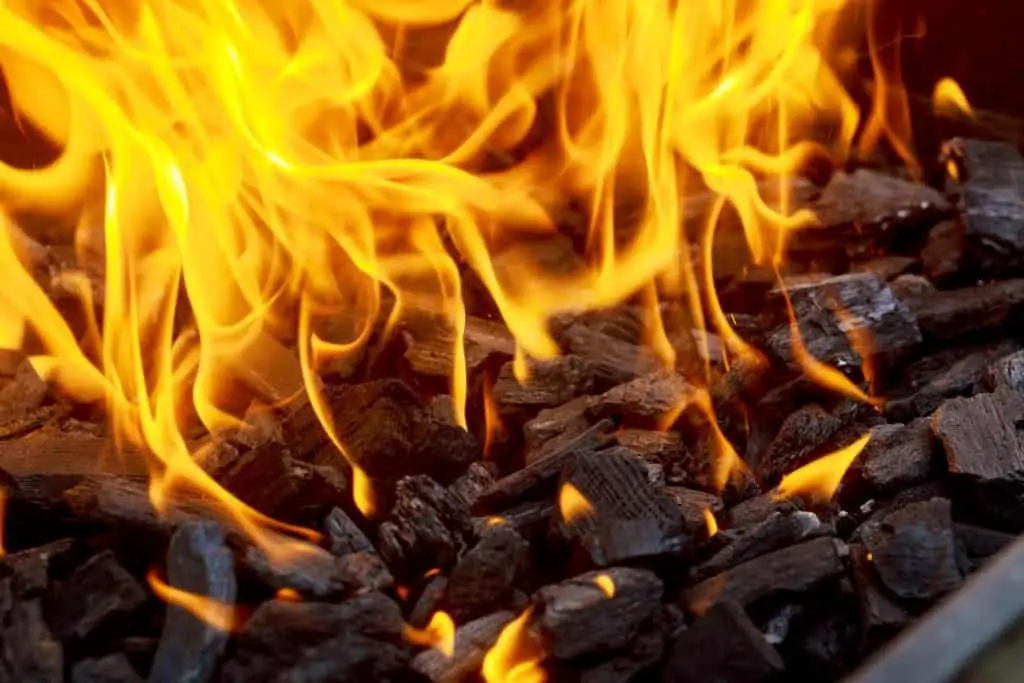If you own and maintain your own garden, you may have at one point used concrete blocks to form a protective barrier around it or to raise the bed. What you didn’t know is that some types of concrete blocks were made with materials that could potentially cause health issues if consumed.
Concrete blocks created with fly ash have been found to leach toxic substances into the soil. These include calcium oxide, aluminum oxide, and magnesium oxide. There are other heavy metal byproducts such as lead and arsenic. In addition, lime can leach into the soil over time, raising its pH level.
Fly ash is essentially classified as hazardous waste. Many gardeners have found out the hard way that certain types of concrete blocks will release harmful substances into the soil. If consumed, they could impact the nervous system or, at worse, cause heart damage and cancer.

“Class C” Fly Ash
Fly ash or “flue ash,” is a byproduct of coal-burning plants and is what’s left over after the boilers burn off all the fuel. In the past, the ash was released into the atmosphere, but due to new pollution laws, the ash is collected out of combustion chambers and recycled.
There are two types of classes of fly ash. “Class F” is when plants burn anthracite or bituminous coal. This type of coal is harder and older than ignite or sub-bituminous coal which is where “Class C” fly ash comes from. Class C fly ash contains higher amounts of lime, alkali, and sulfate in its composition.

Class F fly ash is pozzolanic. Pozzolan is a type of volcanic ash that comes from Pozzuoli, Italy. It contains more alumino-silicate glass and quartz. This has very little value as a cement. Class C fly ash, on the other hand, is cementitious and hydraulic. It contains calcium sulfate, calcium-rich glass, and magnesium oxide.
Class C fly ash can become cement when added to water, much like Portland Cement. This is why fly ash is currently used as a replacement or partial-replacement for Portland Cement in many concrete mixtures. It’s cheaper, and some claim that it actually improves the concrete. Source
There are many uses for fly ash. However, there have been many instances of negligence in which fly ash has contaminated groundwater. In addition, it can contaminate surface water as it erodes, through runoff, and even though particles that become airborne and land in the water.
Toxicity
Not all blocks are made with fly ash. There’s a distinct difference between cement and cinder blocks. Most concrete is made by mixing in Portland Cement, a mixture that is manufactured in the UK. It contains many compounds that, when mixed with water through a process called “Hydration,” hardens over time. These are generally safe and toxin-free.

Cinder blocks have not been manufactured for 50 years. They are concrete blocks that included “cinders” in their ingredients, which were burnt coal byproducts. Any blocks that contain fly ash have the potential for leaching toxic heavy metals into the soil.
Here is a list of the substances that can contaminate the environment around the blocks:
- Arsenic
- Calcium
- Zinc
- Bromine
- Gold
- Cerium
- Chromium
- Selenium
- Cadmium
- Mercury
- Lead
Consuming or breathing in any number of these substances in unhealthy amounts can cause damage to the nervous system, heart, gastrointestinal system, lungs, and kidneys. Not to mention other major symptoms like cancer and birth defects.
So how to tell if you have Cement or Cinder blocks? Blocks that are only made from Portland Cement are heavier and more expensive while those that are made from fly ash are cheaper and lighter in weight. If you are looking to buy cement blocks, it won’t hurt to ask the retailer if the blocks they sell contain fly ash.
If you own cement blocks and are not sure of their composition, it might be best to err on the side of caution and do without them.
Read more: Concrete is Terrible for the Environment (Here’s Why!)
What Should You Do?
If your garden contains flowers instead of edible foods, then there is no hazard toward humans. The lime that leaches into the soil can increase the pH of the soil, but other than that, using the blocks should be fine.

If your garden has edible foods and is surrounded by blocks that contain fly ash, it’s possible that these toxic substances are seeping into the soil and subsequently into the edibles.
Not to mention the acidity from the lime could be making its way into the edibles.
You should always frequently monitor the pH of your soil regardless and keep an eye on the health of the soil over long periods of time.
As an alternative to these cement blocks, it is recommended that you replace them with natural stones, wood, or other materials.
Related article: Does Concrete Kill Tree Roots?



